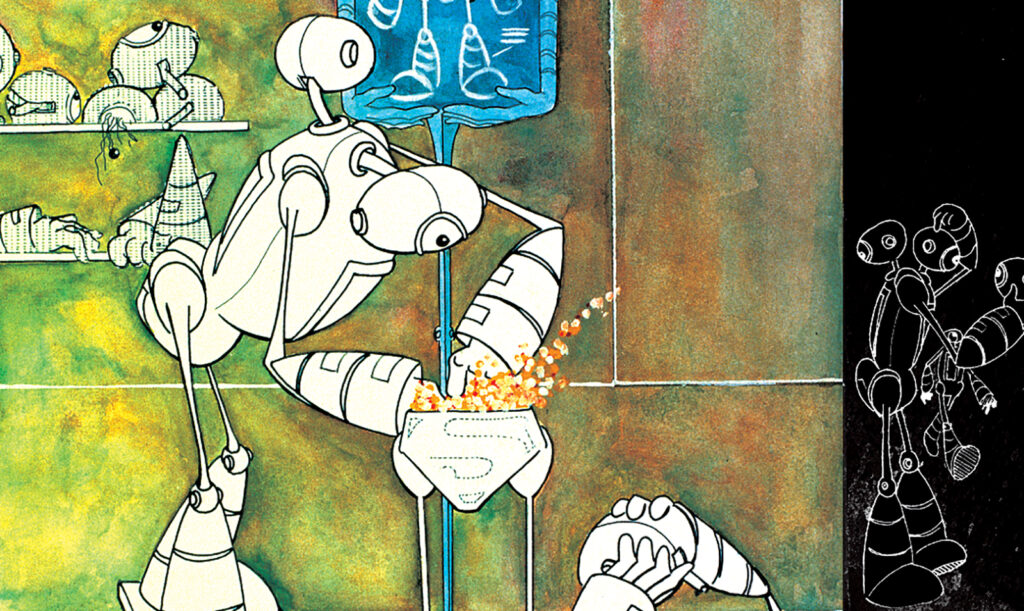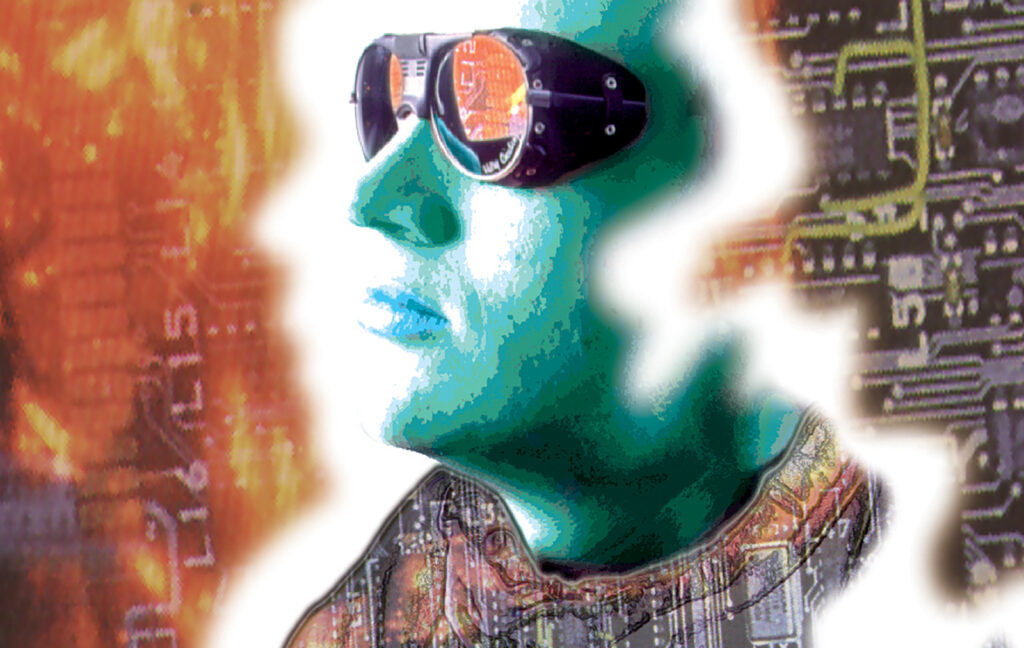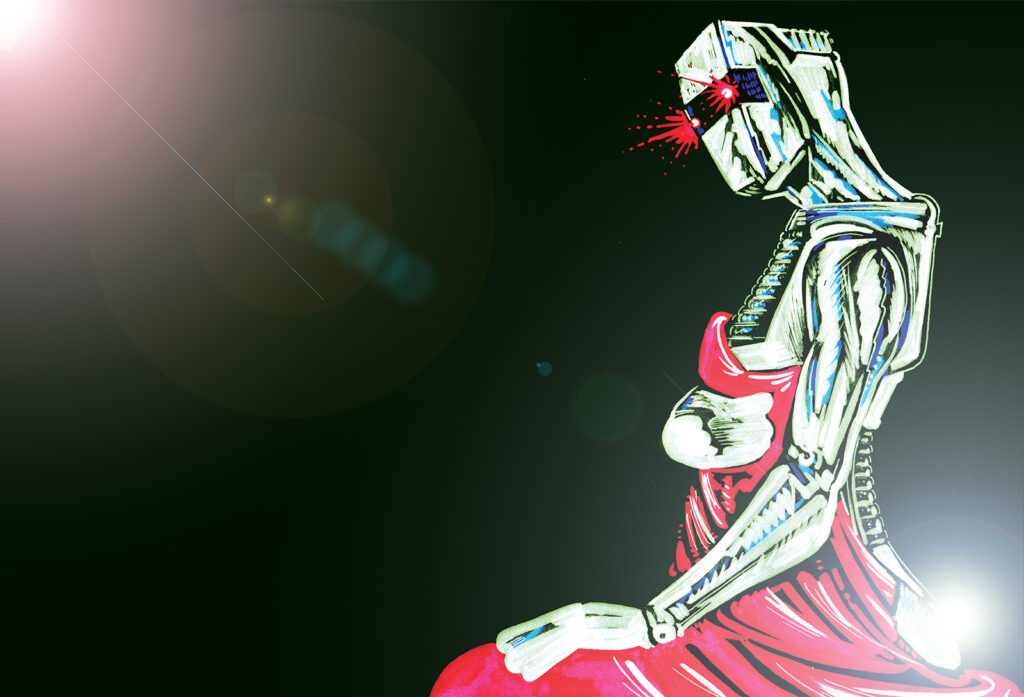A.I. let go: are robots coming to take us away (ha ha)?
What they want, I don’t know
They’re all revved up and ready to go
Today is 7th September, 2022. The date matters, because when we talk about A.I. Creative Engines we are behind the curve before we’ve finished speaking. Come back on October 7th and I’m sure there will be more tangents and new considerations.
But maybe no more answers.
If you are one of the few people I talk with who doesn’t know (yet) what A.I. Creative Engines do, that will change soon enough ~ and by then they’ll be doing a lot, lot more. Every upgrade of the programs makes that big a leap forwards.

Some time in the near future, computer apps will be able to produce pages of text that you’ll struggle to distinguish from that of a human copywriter. They will serve up digital paintings and illustrations that look accomplished and imaginative. And they’ll manufacture convincingly genuine ‘photographs’ of impossible events and insidious lies.
As a tool, they have the potential to be as dangerous as the automatic rifle or as ubiquitous as email.
They’ll probably be both. And more.
Looking at the world of Art and Comics, it’s being argued that A.I. proposes an existential threat to many of our professions, but is that true? And if they are… is it actually a bad thing?
(for now) A.I. generators are not creating anything ~ they output iterations based on previous creations. Which shouldn’t be dismissed because that’s what a lot of Content Providers in the Creative Industries do, when you think about it.

Whole careers have been built on playing with the styles and ideas of previous generations. The Creative Industries may be less creative than we imagine…
If we stop to consider the recent field, we notice how much of it is remixes and reimaginings. From flat vector-style illustrations harking back to the geometric shapes of 50’s advertising to soft-focus dollies and faeries with their face tilted up to one side, or a thousand other visual tropes and fashions from commercial illustration of the last 15 years.
Sure, some people making these images do more than reference What Came Before with a modern tweak (who you think those creative types are will vary depending on your taste and your awareness of what was done in earlier times). I can think of a good number and I’m sure you can find examples of every trope being used in imaginative ways to produce notable works of craftsmanship and/or art.
Those artists have found a way to imbue their work with enough personality that clients seek them out and negotiate a fair price for new work.
(well, maybe ‘acceptable’ is a better word than ‘fair’ but good, creative work does have a market value)
Most work in that field though, is … less highly valued.
Maybe the picture is good-but-generic?
Maybe the project does not require something unique so much as something to meet customer expectations?
Maybe the client has no experience to judge how special or common the picture they are buying is?
Maybe ~ and I say this without rancour ~ much of the work in the Creative Industries is just … not …creative?
Which is okay. Creativity is not the same as Quality or Commerciality.
Every freelance has had job offers that quote a laughably small fee:
“it won’t take you long to knock this out!”
“it’s the sort of thing you love doing, anyway!”
“great exposure!”
These clients don’t mean to insult anyone, but they don’t value our work because it has no significant value in their business model. Such clients never want to pay, anyway. They’ll be happier shelling out for an hour of A.I. generation to get 20-50 finished comps to select from than they are paying us the same money for a handful of visuals to develop. A lot of competent visual artists are going to find themselves replaced on these jobs.
That’s not the Death of Art so much as the Redundancy of Content Makers.
Bad news for those who’ve forged their persona and their careers making cool pictures based on old cool pictures: they are going the way the typing pool did when offices bought word processing programs.
Bad news, too, for jobbing designers and illustrators who supplement their income from more interesting commissions with such bread-and-butter work.
There is no avoiding that, I think.
We can probably expect larger businesses to pay someone to write A.I. prompts and filter the results ~ that way the manager only has to select from five Best Options. Individuals with an interest in Content as well as Surface, could be the vanguard of a new profession of Prompters, taking the tools A.I. gives them and finding ways to generate more images faster than ever before.

And we hope there will always be highly-cherished clients, for whom working with a creative human is worth the time and money, lending their business a premium status. There won’t be enough of them to support the current mass of the illustration industry, but these clients were never going to employ the majority of illustrators.
You can think of analogues in advertising, copywriting, film-making, I’m sure.
There is going to be a clear out of the professions and a lot of people who describe themselves as Creatives are going to have to find other ways to make a living.
But then, miners had to find new skills when the pits closed.
Is that comparison too proletarian?
How about the way photographers’ saw markets for their skills disappear overnight?
Typesetters; proofreaders; printers(?!?).
The list of forgotten jobs that were once essential to getting visual work in front of readers is a long one.
We are not special because we can use the previous set of tools.
Spot illos and gag cartoons are the low hanging fruit for A.I. artists ~ nine times out of ten, images are used as decoration or to raise a brief smile.
How many pictures have you seen this week alongside your news or jokes on social media?
How many of them can you remember the credits for?
If you’ve read this far, you probably pay attention to such things… imagine how easy it would be for A.I. to supply all that Content without most people noticing.
It won’t end there. It’s not hard to see the apps developing greater complexity and being able to generate longer works. Already, they can manage effective copy for a variety of uses. Getting it right for comic strips, graphic novels, even widescreen cinematic spectacles are just a matter of time.

Bloody terrifying, isn’t it?
Well, maybe, when you consider the opportunity for corruption and deceit in the wider world.
In the realm of illustration and comics, A.I. is going to become the predominant way for producing Content ~ not great news for the humans who make their living producing Content and probably another rise in the Homogeneity of Content Index.
...the public gets what the public wants
But I want nothing this society’s got
Like all forms of automation A.I. reduces the requirement for human involvement in production. It will decimate a number of workforces and that will have societal and human costs as well as benefits.
These changes surely have to accelerate progress towards a Universal Basic Income (with the caveat that our governments will bastardise that so much it doesn’t do much beyond keeping the plebs alive) and when the dust settles on that, we should be left with more time to spend on enrichment work and less on feeding the Content Machines.
I genuinely don’t think that A.I. is going to replace the ineffable quirkiness of the Human in Art (it will supplement it of course, but not even that yet).
We make Art through our misunderstandings and our accidents, our random connections and our individual perspectives.
We draw a line between the Artist and the Audience. A line that connects one story to others we’ve heard or told. A line that varies in weight and direction with human reactions as one nuance is adding to the piece while another is losing the plot.
A human eye and mind and heart makes connections… joining the line(s) back through all the influences and allusions that got us to the point of making our Art.
With good leadership, A.I. would be a boon to society as we moved to a post-work, creative and leisure lifestyle.
(if you find a government that offers good leadership, do let us know ~ I suspect we’re all screwed for a generation, but that’s politics fucking with us, not technology)
If we talk about Art, the machine offers more opportunities than threats. I’m looking forward to what the next wave of artists do with it and what the old guard do instead of the grunt work it takes away.
Good luck everyone.
footnote:
Yep. I repurposed and tweaked a bunch of old illustrations for the sake of decorating this blog… seemed like a good idea at the time.



